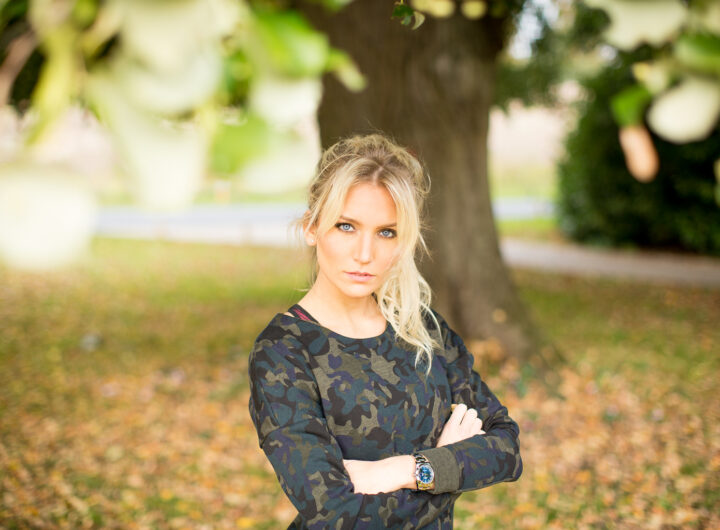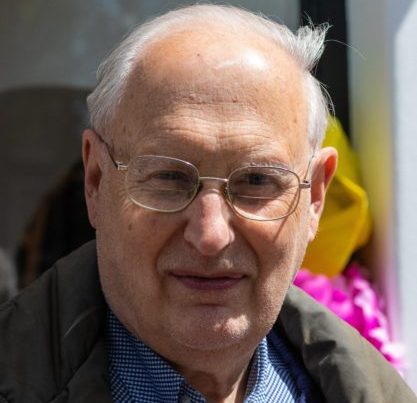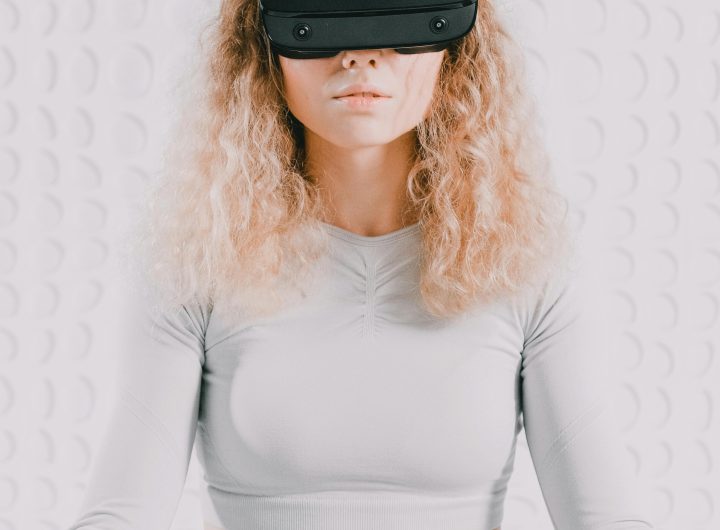I want to share an extremely rare behind-the-scenes experience I recently had with Cirque Du Soleil in Finland. They’re the world’s largest & most profitable circus troupe, and I’ve been fortunate to have seen several of their shows – and have been uniformly delighted by their exceptional choreography, their enchanting imagination, and their unbridled connection to the human soul. In Helsinki, I viewed Toruk: The First Flight, at Cirque Du Soleil ahead of the London premier, which debuted last night, on the 23rdJune. For a few magical days, I was immersed in the world of Avatar, as this Cirque iteration breathes new and unusual life into James Cameron’s remarkable epic. I watched the show and spent a full day backstage meeting and interviewing the artists about their gruelling lives as world-class performers (click MORE for the full interviews), worked alongside the costume designers and makeup artists, tried out the equipment with the performers, and experienced what life as an Avatar at Cirque Du Soleil might be like for a day. I left with new levels of respect and humility for the raw talent of these super-humans. Read on to see for yourself why this is one show you (and the family) NEED to catch!
![]()
THE SHOW
The first thing that hits you is the sheer scale of the stage and production. There are 43 artists in the cast (1 actor, 1 singer, 1 percussionist, 1 kite specialist, 1 boomerang specialist, 6 puppeteers, and an enormous number of acrobats including 1 contortionist)
![]()
To complement the physical performances, there’s digital media too; no fewer than forty video projectors with a projection surface of approximately 20 000 square feet, (more than 5 times the size of an IMAX screen) transforms the stage within seconds creating new shapes, textures and colours, which helps to emulate the world of Pandora. The colours have a bioluminescent quality in shades of blue, purple and green. Next to the Na’vi’s 25 shades of blue which were invented for the costumes and 4 blue-base skin tones to depict the different DNA variations among the Na’vi beings, it looks truly magical and is quite the overwhelming visual spectacle.
![]()
THE NA’VI
![]()
Whether you’re an Avatar mega fan or not, you’ll easily be able to follow the story, so don’t worry, pre-knowledge is not required! The First Flight differs from other Cirque shows I’ve seen in the past and not just because of the vast stage, unlike the conventional structure you may have come to expect from Cirque – the artists don’t speak the invented Cirque language, but instead they speak Na’vi and the storyteller who beautifully guides you on the odyssey speaks English. There is less live music, there are more spectacular acrobatics, but it is all part of the storyline with several artist on stage at the same time. In some ways, it’s a little bit more like a musical than a traditional act. Also, you won’t find any of the slapstick clown humour which renders this format so universally appealing; that said, the most important ingredient it shares with Cirques is that it takes you on an imaginary immersive journey, and it does it with the same excellence you’d expect from this venerable troupe. I was completely blown away – it was pure escapism; the music, the scenography, the venue and undiluted talent. Remarkable.
![]()
Lydia, the Viper Wolf
Lydia who plays a Viper wolf and is part of the 14-puppet crew who represent the creatures of Pandora. The largest puppet is the titular Toruk, which has a mammoth wingspan of 12 meters and weighs approximately 115 kg. All the puppeteers are equipped with microphones and make their own animal sounds for perfect synchronisation with their movements.
![]()
Kiter
…. Is head of the 19 kites that feature in the show: that comprises 6 quads (kites equipped with four-lines), 11 kites on poles, and 2 giant ‘traction kites’ which fly over the audience. A traction kite is typically large enough to pull a vehicle on land, snow, ice or water, and it is exceptionally difficult to mobilise with any degree of control – I can attest to that personally! How these kite magicians extract such precision will remain unknown to me!
![]()
Interview time! I sat down with a number of the performing artists, but focussed on fellow brit, Lydia Harper, the double cloud and Chinese pole artist, whos responses are forged into the following fascinating insight into the life of a world-class performing artist!
TRAINING LIKE A CIRQUE’R!
- What’s your training background?
My Background and introduction to Cirque is quite different to everyone else’s. I was an actress in my youth and went to the national centre for circus arts. I got in to it more from a performance side and then got in to the physical side of it. A lot of people that I work with are gymnasts or dancers who ‘started training when I was two and I’ve been doing back flips for years….’, whereas I started when I was 15 years old, which is considered late. Most people have been doing this their whole life. It puts me at a slight – not disadvantage – but at a different level when it comes to training, whereas there are some people who just don’t need training as much because their body is conditioned to do this, whereas my body is conditioned to eat crumpets and watch tv and drink tea so I have to train in a different way to them. So at 15 I had to do a bit of catching up to get to the same level.
- What sort of training did you do?
The sort of training I did was trapeze and rope, and when I went to circus school I started learning Chinese pole and cloud swing. Cloud swing is like a loop of rope, some people do it swinging and do big tricks. I do it in a very contemporary fashion. I have these two loops – one above the other, I hang off one and drop off the other one.
- When did you decided you wanted to get into Cirque?
It was sort of a joke, I just emailed a show reel to them, just out of the blue, going I really need a job… these are all the companies I’d like to work for… expecting them never ever to contact me. Most people have to do this really big audition process, they get cut, two day gruelling auditions… I kinda skipped all of that and about 7 months after I sent in my show reel they sent me an email asking if I’d like to join the show. I feel super lucky and like ‘teee heee, I didn’t have to audition’!
In this show we have a lot of what’s called ‘generalists’, which means we’re very good at lots and lots of different things. You can say ‘hey can you do this new trick, we’ve got these ropes and we want you to be able to use them like this. And then we’re like yeah ok. Whereas in other show in Cirque Du Soleil they have specialists – you have a contortionist, you’ve got jugglers whereas on Toruk we do everything.
![]()
- What’s a typical day like in terms of training now that you’ve been here for four years?
I’m an artist coach so I have to be here (in the gym) very early; i’ll do about 45 minutes to an hour warming up, and some physiotherapy. I’ll do like 20 minutes on an exercise bike, I usually do interval training, then I’ll do a shoulder warm up sequence, so lots of exercises for my rotator cuffs, and the hanging shoulder shrugs, then I’ll do some hanging leg lifts, and then a lot of core work, then I move on to my gluteus and legs. I do a lot of gluteus strengthening and hip releasing exercises as well. We have two physiotherapists who tour with us full time. They are there for general maintenance, helping us build training programs, for instance if your knee is getting a little bit sore because you’re doing a lot of jumping they’ll suggest a program as to how to strengthen that.
Then I’ll do some on stage training so if there’s something in the show that we need to work on, integrating new artists, making some artistic changes, we’ll have on stage training sessions. Then I’ll do my makeup which takes about an hour, then in the middle of that I’ll have meeting about who’s doing what in the show. Then we do the show, the after the show I’ll do a strengthening workout including free weights, pull-ups, squats and squat jumps. I do my strength training workout after because I want to be in the best possible shape for the show. I don’t want to exhaust myself by lifting heavy weights prior to the show, so I do it afterwards. It’s quite a nice cool down as well!
So to summarise, we have a 45 minute warm-up which includes at least 20 minutes of HIIT training, followed by a two-hour show, followed by a weight session in the gym, and finally a 15-20 minute cool down. That’s a good solid 5 hours!!
![]()
- What would you say is your top tip to help with recovery?
Drink loads of water, because you sweat so much more than you know. We really notice the difference when we don’t drink enough. For example when we were in Australia recovery took a lot longer because we were so hot and dehydrated. I reckon I drink about 5 1/2 litres of water a day.
We also get massage therapist who come and visit us in each city. We can sign up for massages each week. Our physiotherapists give hands-on treatments if we need any soft tissue release. I’m a fan of dry needling; so I get dry needling in my back and scream but that’s really nice as well. So everything you could possibly do for your body, just do it!
![]()
- What does you weekly training routine look like?
So I train three days a week for 5 hours, because we have 2 shows and no training. On a Monday we travel so we have that day off and we have Tuesday off too, but most of us will go train for an hour – resistance or yoga or something. Still exercise but much more chilled.
- How do you complement your training with nutrition?
Everyone is very different. I expected everyone to have the same sort of diet but it’s completely different. For me personally I don’t do very many carbs. Like I don’t do pasta and rice but I do loads of protein and salads. I don’t eat pasta but I do eat cake. Whereas some will go just rice beans and pasta and then no cake out caterers provide such an array so there’s really something there for everyone.
![]()
- How do you balance work life situation… how do you make time for yourself?
You really have to force yourself to especially when travelling to different cities every week. You want to go out and explore the city but we just came out of doing four weeks with nine shows in a row which was quite intense so then this weekend my ‘me time’ was going to a sauna, going to a tiny coffee shop and just reading a book. It’s a hard balance. Like it’s a beautiful day outside but I got here at 10am and I’m not going to leave until 10 pm so I don’t know what the weather is like so you need to find the things that make you feel human… I have a lot of Lush bath products, and I have to have my lush bath at the end of a long week and that’s the sort of thing that makes me feel human again.
- What’s your favourite thing about working for Cirque Du Soleil?
Everyone thinks you’re really cool! It’s amazing to be able to travel the world and make people happy. That’s what Cirque du Soleil does, it’s this magical world where you go and see a show and your mind is blown – the costumes, the characters, the music, the acrobatics – it’s all just incredible. To be a part of that is really really special whilst you get to tour the entire world doing it.
![]()
- What’s the coolest place you’ve been to?
New Zealand was my favourite country ever but I’m pretty excited to go to the U.K. because I’ve been touring for four years so now, I’m coming home!
![]()
KITE FLYING WITH CHRIS GOFF, KITE SPECIALIST!
- What got you into Cirque, Chris?
I started playing kites when I was six years old. My dad wanted something for the whole family to do something outside rather than spending so much time inside inside watching movies or whatever. So he bought some kites, we headed out onto a field. A local kite shop saw me and asked how long we’d been flying and my father was like, 30 minutes. This was in Stockley park just outside of London. It ended up that I had a natural ability for it and it allowed me to travel around the world and it brought me to here. I was the only one in my family apart from my dad who actually took it up.
- Did you apply to Cirque?
I didn’t originally apply to Cirque. The I got a message out of the blue asking if I’d like to met the kite team. It’s quite a niche skill, and now I’ve been here for 2.5 years!
![]()
- Once you joined was there a lot of training involved?
Completely, first I went to Montreal for 3 weeks (it’s a Canadian company), learning how to do makeup lessons, 2-3 acting lessons a day. Then I had a trainer who helped me get my fitness levels up as I’d never done anything like this before. It was a real shock to the system.
- What was the hardest part for you?
The hardest bit was the acting, and just feeling comfortable. Also the fact that the costumes you’re in are complete Lycra so there is no hiding in that. You have to be completely comfortable just being yourself, not being self conscious in front of 7000+ people.
![]()
- What else do you do on the show aside from the kite discipline?
Most people on the show need to do at least two clans (the different Avatar tribes-people), so I do the Mataky which is the first one, then I do Takamay, then I do Kattaney – the kites.
- What’s a typical day like in terms of training regime?
A typical day now is as follows… what I really like is that there are no early mornings – you normally start in the afternoon. You come to work about 1 o’clock if it’s a one-show day. You do gym work mostly after the show because you don’t want to do too much beforehand. For me, the kites are very light-weight, and it’s all about muscle memory, so if you work out before the muscles are pumped and you’re going to pull too hard. With the giant kites it’s all on the legs so you don’t want to do too much leg work beforehand. With the giant kites you need to be able to run a good 20% faster at all times because if it ever begins to fall you need to run faster. So you never want to be sprinting full speed but you always have to have that there if needed.
Going back to what my normal day is like, I come in and stretch in the morning as you stiffen up overnight. Then I eat. I eat a good hour before the show because it’s not much fun being in a harness when you’re still digesting food. Then you do the show and I’ll eat after the show.
Photo Credit: Jesse Faatz
- What does your typical diet look like, if you have one?
The good thing is you can eat really whatever because you’re constantly burning so much energy. The catering is amazing at Cirque. The body does tell you what you need and crave, so I pay attention to it and act on it.
- What difficulties have you come across on your time with Toruk?
We’ve experienced it here, for example last week the wind was totally different to the week before because we had humidity. So the kites were suddenly feeling heavier. The air’s denser. We did Mexico City so there was literally no air. We were pulling this massive kite, it was still flying but you’re so high up with the altitude so you’re pulling this kite but you can’t feel it because it’s so light!
- What tips do you have to anyone who’s interested in getting into kite flying?
My tip tip would be spending a little bit more money when buying a kite because often the problem is the kite doesn’t fly properly and then people get bored and never fly again. Especially if you go to a proper kite shop they will advise you on what’s best. It’s so healthy for you, these days most people walk around with their heads down so just to spend a few hours in the middle of a field looking up, is so different. Also kites are cheap. Once you’ve bought your kite you’re only reliant on the wind, the rest is down to you. Before I had this job, I flew once a week and if I didn’t fly once a week it would change my whole posture and attitude. When you’re flying outside you’re feeling the wind and I can map the wind now from just feeling it behind the neck!
I hope that has been an intersting journey into the backstage secrets of the latest offering from Cirque Du Soleil! You can book HERE – enjoy 
Faya x
![]()
![]()
![]()
![]()
![]()
![]()
![]()
![]()
The post BEING AVATAR FOR THE DAY! appeared first on Fitness on Toast.
 Healthy Eating Nutrition Tips for Busy Lifestyles
Healthy Eating Nutrition Tips for Busy Lifestyles  Tech for a Tranquil Mind – Apps and Devices for Mental Wellness
Tech for a Tranquil Mind – Apps and Devices for Mental Wellness  Is it time to embrace Quiet Living?
Is it time to embrace Quiet Living?  Escaping the procrastination trap-how to start your focus era
Escaping the procrastination trap-how to start your focus era  Managing Type-2 Diabetes
Managing Type-2 Diabetes  The 15-Minute Movement Habit -Simple Desk Exercises for Working Bloggers
The 15-Minute Movement Habit -Simple Desk Exercises for Working Bloggers  Learning More About Magic: The Gathering – Kindred Decks
Learning More About Magic: The Gathering – Kindred Decks  The Most Popular Planes in Magic: The Gathering
The Most Popular Planes in Magic: The Gathering